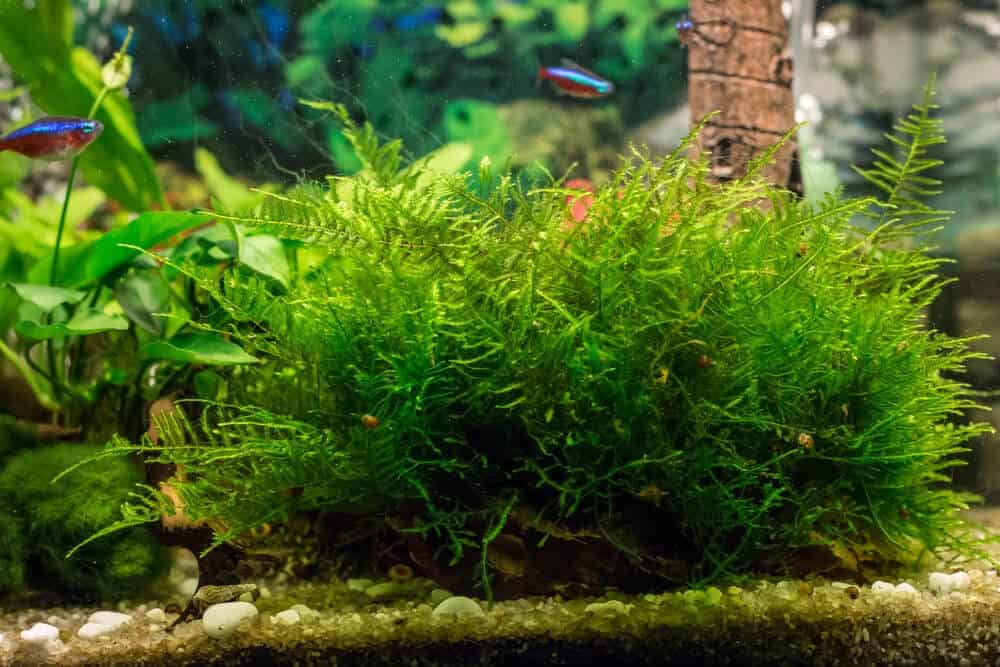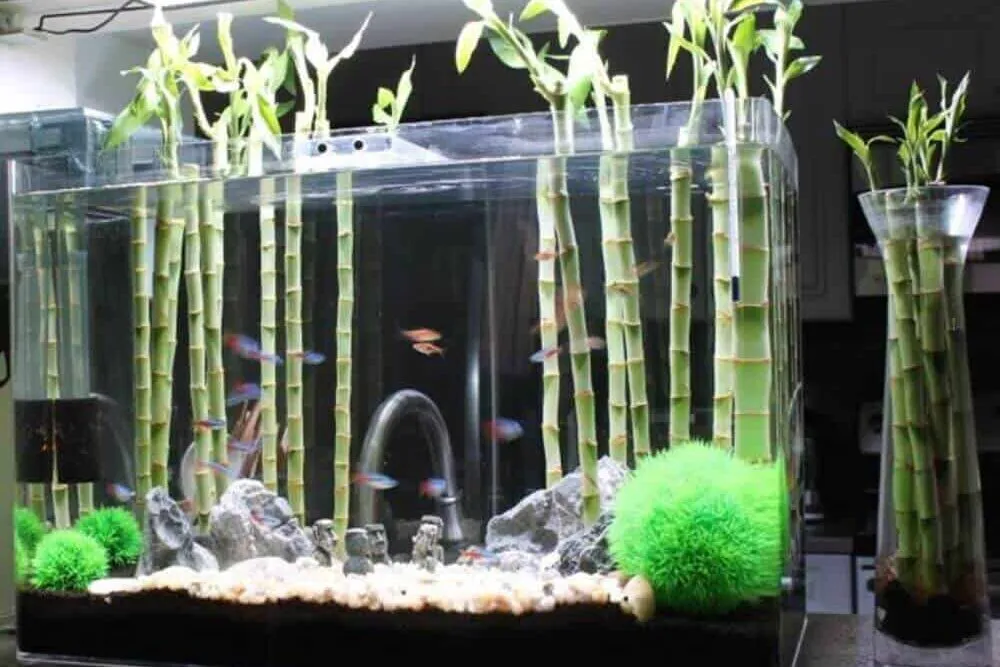Mosaic Plant (Ludwigia Sedioides) Care Guide and Growth Tips

You’re in for a treat today as we explore the fascinating world of the Mosaic Plant, also known as Ludwigia Sedioides. This vibrant aquatic plant is a sight to behold with its intricate leaf pattern resembling a mosaic artwork. From its unique appearance to its ecological significance, there is much to discover about this fascinating species. So immerse yourself in this captivating article and get ready to be amazed by the beauty of the Mosaic Plant.
Description
The Mosaic Plant, scientifically known as Ludwigia sedioides, is a unique aquatic plant that can add beauty and interest to any aquarium or water garden. It is commonly known for its mesmerizing mosaic-like pattern on its leaves, which gives it its popular name.
Appearance
The Mosaic Plant has small, round leaves that grow in clusters on thin, delicate stems. The leaves themselves have a striking pattern, with green and red hues arranged in a mosaic-like design. This distinct appearance is what makes the plant so visually appealing and captivating.
Habitat
The Mosaic Plant is native to South America, specifically regions like Brazil, Argentina, and Uruguay. It typically thrives in freshwater habitats, such as slow-moving rivers, ponds, and marshes. In its natural habitat, it often grows in shallow water, with its stems and leaves floating on the surface.
Cultivation
To successfully cultivate the Mosaic Plant in your aquarium or water garden, it is crucial to provide the right conditions and care. Here are some important factors to consider:
Planting
When planting the Mosaic Plant, it is best to use a substrate specifically designed for aquatic plants. This substrate should be fine-grained and nutrient-rich, allowing the plant to establish its roots properly. Gently plant the stem of the plant into the substrate, making sure it is securely anchored.
Watering
Since the Mosaic Plant is an aquatic plant, watering is not necessary in the traditional sense. However, it is crucial to maintain the appropriate water conditions for the plant to thrive. Keep the water level consistent and ensure that it is clean, free from pollutants and toxins.
Lighting
Proper lighting is essential for the Mosaic Plant to grow and develop its vibrant colors. Provide moderate to high levels of light, either through natural sunlight or artificial aquarium lighting. Aim for a consistent lighting period of 10-12 hours per day.
Temperature
The Mosaic Plant prefers warm water temperatures, ideally between 72°F and 82°F (22°C and 28°C). It is essential to maintain a stable temperature within this range to promote healthy growth and prevent stress to the plant.
Propagation
The Mosaic Plant can be propagated through stem cuttings. Simply trim a healthy stem from the existing plant and plant it in the substrate, ensuring it is securely anchored. With proper care and favorable conditions, the stem will develop roots and grow into a new plant.
Aquarium Care
Taking care of the Mosaic Plant in your aquarium requires attention to several factors. Here are some key aspects to consider:
Tank Size
The Mosaic Plant can be grown in a variety of tank sizes, depending on the number of plants and the desired aesthetic. However, it is essential to consider the plant’s growth potential and provide enough space for it to flourish without overcrowding the aquarium.
Water Conditions
Maintaining optimal water conditions is crucial for the Mosaic Plant’s health. Keep the water temperature within the suitable range mentioned earlier and ensure it is well-aerated. Additionally, regular water changes and the use of a water conditioner can help remove any harmful chemicals or contaminants.
Filtration
Adequate filtration is essential for maintaining clean water and reducing the risk of algae growth. Use a reliable aquarium filter that can effectively remove debris and organic matter. Consider a filter that provides both mechanical and biological filtration for optimal results.
Nutrient Requirements
The Mosaic Plant requires a nutrient-rich environment to thrive. Consider supplementing the water with appropriate aquatic plant fertilizers to provide essential nutrients such as nitrogen, phosphorous, and potassium. These fertilizers can be found in liquid or tablet form, and their usage should be based on the specific instructions provided.
Maintenance
Regular maintenance is necessary to ensure the Mosaic Plant’s long-term health. Trim any damaged or overgrown leaves regularly to maintain the plant’s overall appearance. Additionally, monitor the water quality and conduct routine water tests to ensure that the pH, ammonia, and nitrate levels are within the optimal range.
Benefits
The Mosaic Plant offers a range of benefits when incorporated into an aquarium or water garden setting. Here are some notable advantages:
Aquatic Habitat
By introducing the Mosaic Plant into your aquarium, you can create a natural and aesthetically pleasing habitat for fish and other aquatic creatures. The plant provides shelter and hiding spots, contributing to the overall well-being of the ecosystem.
Water Purification
The Mosaic Plant has a natural ability to absorb excessive nutrients from the water, helping to prevent the growth of algae. It acts as a natural filter, aiding in water purification and maintaining a healthy aquatic environment.
Aesthetic Value
With its striking mosaic pattern and vibrant colors, the Mosaic Plant adds a unique and visually captivating element to any aquarium. It can serve as a focal point or a beautiful background plant, enhancing the overall aesthetic appeal of the underwater landscape.
Challenges
While the Mosaic Plant brings numerous benefits, there are certain challenges that aquarists and water garden enthusiasts may encounter when cultivating this plant:
Invasive Potential
In some regions, the Mosaic Plant has been declared an invasive species due to its rapid growth and ability to spread rapidly. It is essential to avoid releasing the plant into natural water bodies or habitats where it could outcompete native species and disrupt the ecosystem.
Algae Growth
While the Mosaic Plant can help prevent excessive algae growth, it can also be susceptible to algae infestation itself. If not properly maintained or if water conditions are unfavorable, algae can quickly take over the plant and hinder its growth. Regular cleaning, monitoring of water parameters, and proper maintenance can help prevent and manage algae issues.
Interesting Facts
In addition to its unique appearance, the Mosaic Plant possesses some intriguing characteristics:
Leaves Orientation
The leaves of the Mosaic Plant have an interesting ability to orient themselves toward the light source. This behavior ensures that the plant can maximize its exposure to light and photosynthesize efficiently.
Blooming Behavior
When conditions are favorable, the Mosaic Plant can produce small yellow flowers that add an extra touch of beauty to its appearance. However, it’s important to note that the plant’s primary attraction lies in its stunning leaves, rather than its blooms.
Medicinal Properties
The Mosaic Plant has been traditionally used for its potential medicinal properties. Here are some common uses and current research:
Traditional Use
In traditional medicine, parts of the Mosaic Plant have been used to treat ailments such as inflammation, urinary tract infections, and digestive issues. However, it’s important to consult with a healthcare professional before using the plant for medicinal purposes.
Modern Research
While traditional uses of the Mosaic Plant have not been extensively studied, there is ongoing research exploring its potential therapeutic properties. Some studies suggest that the plant may have antioxidant and anti-inflammatory effects, but further research is needed to validate these claims.
Conservation
The Mosaic Plant is not currently classified as an endangered species. However, it is important to be responsible when cultivating and disposing of the plant to prevent any negative impacts on the environment.
Endangered Species
While the Mosaic Plant itself is not endangered, there are several aquatic species that rely on its presence for habitat and food sources. Ensuring the responsible cultivation and management of the plant helps protect these delicate ecosystems.
Protective Measures
To safeguard the native ecosystems and prevent the spread of the Mosaic Plant into non-native areas, it is crucial to avoid introducing the plant into natural bodies of water. If you decide to remove or dispose of the plant, do so in a responsible manner, such as composting or disposing of it in a controlled environment.
Cultural Significance
In addition to its biological and aesthetic value, the Mosaic Plant holds cultural significance in certain societies. Here are a few ways it is symbolically and artistically represented:
Symbolism
In some cultures, the Mosaic Plant is associated with concepts of balance, harmony, and growth. Its visually appealing characteristics and ability to thrive in various conditions make it a symbol of resilience and adaptability.
Artistic Representations
The captivating appearance of the Mosaic Plant has inspired artists and designers to incorporate its pattern into various forms of art, including paintings, jewelry, and home decor. Its unique aesthetic qualities continue to inspire artistic creativity.
Conclusion
The Mosaic Plant, with its mesmerizing mosaic-like pattern and striking appearance, adds beauty and interest to any aquarium or water garden. By providing the right conditions, such as proper lighting, water quality, and maintenance, you can cultivate and enjoy the benefits of this unique aquatic plant. However, it is crucial to be mindful of its invasive potential and take necessary precautions to protect native ecosystems. As you care for the Mosaic Plant, appreciate its cultural significance and artistic value, and remember its potential medicinal properties that continue to be explored.



